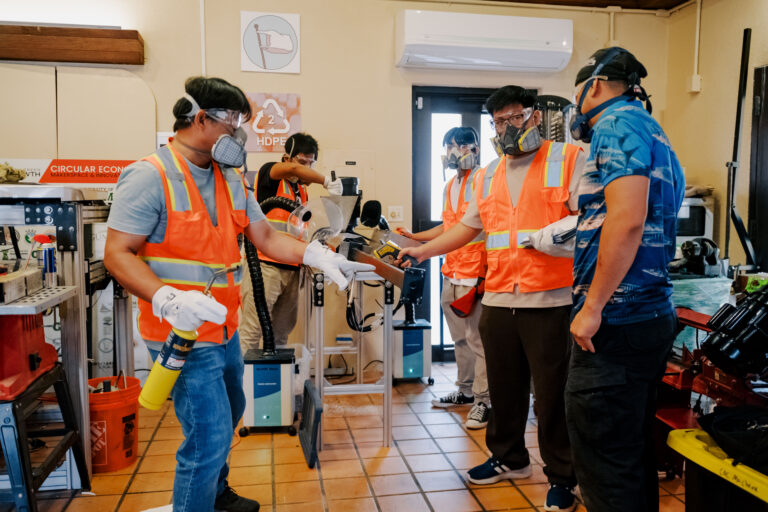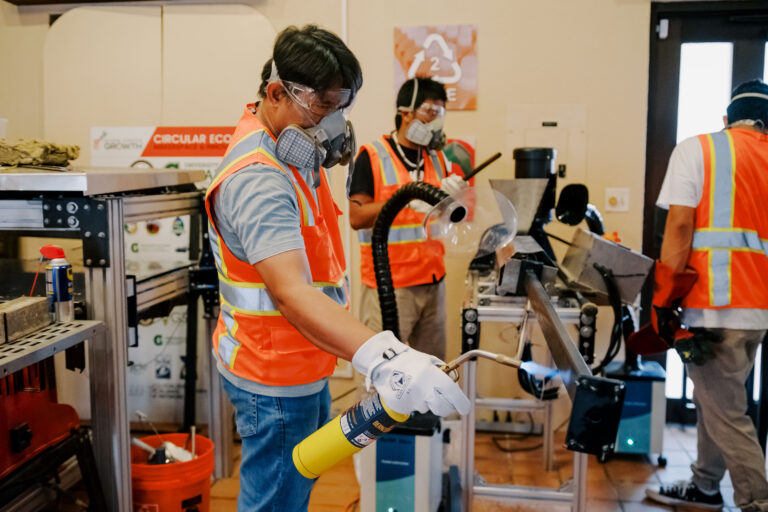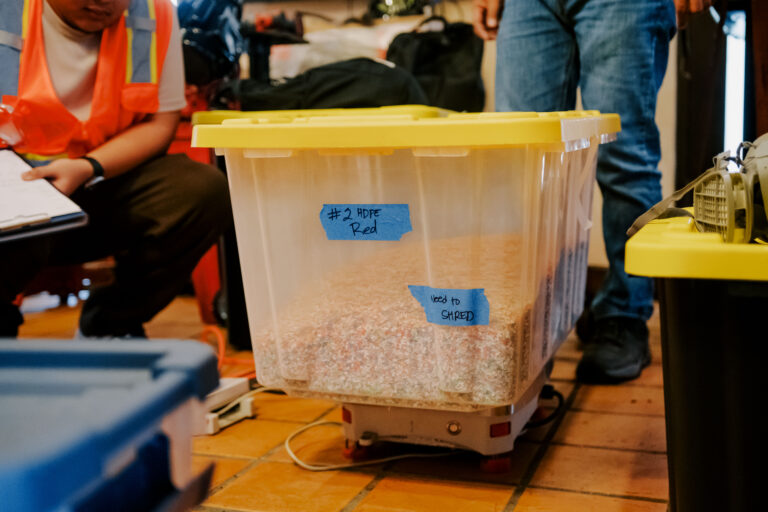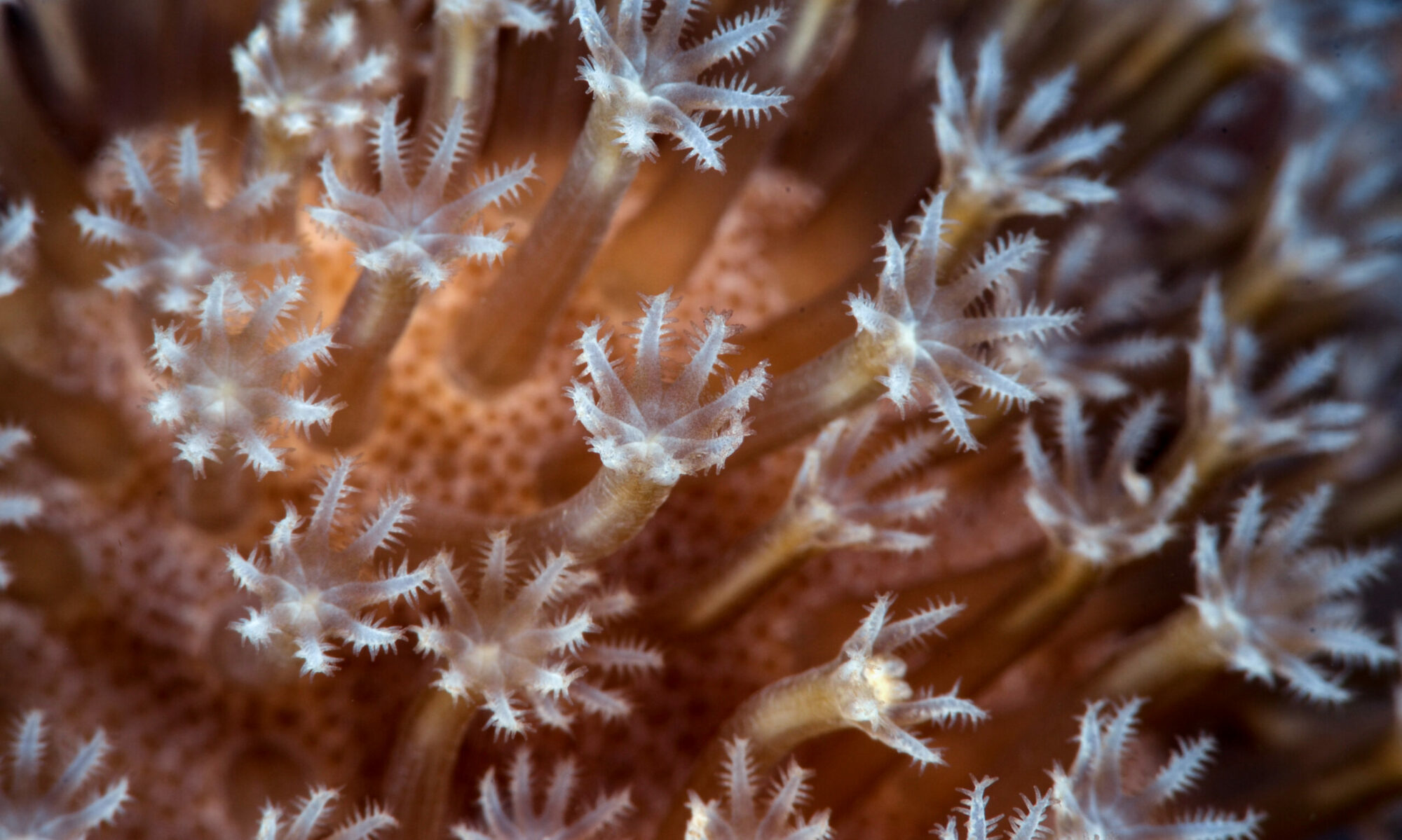


The Guam Green Growth (G3) Circular Economy Makerspace & Innovation Hub is collaborating with Ernesto Guades, Ph.D., an assistant professor at the University of Guam School of Engineering, on a research project exploring how certain types of recyclable plastic can be prototyped into construction materials.
According to Guades, the project received funding through the Pacific Regional Integrated Sciences and Assessments (Pacific RISA) Economic Valuation of the G3 Initiative. Guam NSF EPSCoR is a catalyst for Guam Green Growth.
The broader goal of the economic valuation is to assess and quantify the economic impact and return on investment of the G3 initiative, including components such as the G3 Makerspace & Innovation Hub and the G3 Conservation Corps workforce development program.
“We are working on projects on sustainable materials, particularly plastics,” Guades said. “They provided some seed funds to study how we can convert recycled plastics into materials that can be used in construction.”
The project, which began in January, focuses on creating plastic lumber using specific types of recyclable plastic. While plastic lumber is commercially available, Guades said they are usually costly and limited in application.
“The strength of what we found is comparable to what is commercially available,” he said. “We would like to make it affordable so the result is quite comparative,” Guades said.
Initially, Guades used polypropylene, also known as Type 5 plastic, which is commonly found in food containers. With promising results, the research is now entering a second phase, which expands both the scope of materials and the scale of production.
“Previously, we only studied one type of plastic—Type 5, which is polypropylene. So, what we are doing now in the next stage is we try to also cover the other types of plastic,” he said. “We are now going to Type 2, which is called high-density polyethylene.”
This next phase includes combining—or hybridizing—different types of plastics to evaluate their combined strength and usability.
“We try to combine them … and find out what’s the effect. Whether we can include them as one or we can separate them,” he said.
All fabrication and prototyping are being done at the G3 Makerspace & Innovation Hub using specialized equipment, including a shredder and an extruder machine.
The shredder breaks down plastic waste into smaller flakes, making it easier to process. The extruder melts the shredded plastic and pushes it through a mold to create new products.
Guades is also working with the COMPASS NextGen grant program to engage six undergraduate intern researchers over the summer. Some of these students, from the UOG School of Engineering, are conducting hands-on work at the G3 Makerspace, assisting with the operation of the shredder and extruder, and researching plastic combinations to achieve the right balance of Type 2 and Type 5 plastic for strong, commercial-grade plastic lumber.
The project also aims to create larger sample sizes that could be tested in practical construction scenarios.
“Because now we have limited sections—only very small—we would like to make a bigger section so that we can apply that in several applications,” Guades said.
Potential uses include bridge and housing construction. “Well, it is for plastic lumber. This can actually replace timber or wood. But we would like to do more than that. So, the applications will be for bridges or maybe for structural components of houses. So that’s the target,” he added.
“This is based on the initial experience that we have—it’s promising,” he said. “We are getting a comparable result and even better than what is available commercially.”
The Guam NSF EPSCoR program and the G3 Makerspace are connected through their shared mission to advance sustainability and innovation in Guam.
Guam NSF EPSCoR supports research and workforce development in STEM fields that feed directly into the initiatives at the G3 Makerspace. With collaborative projects like this one with the UOG School of Engineering, researchers and students transform scientific knowledge into sustainable products and technologies, helping to drive Guam’s green economy forward.


